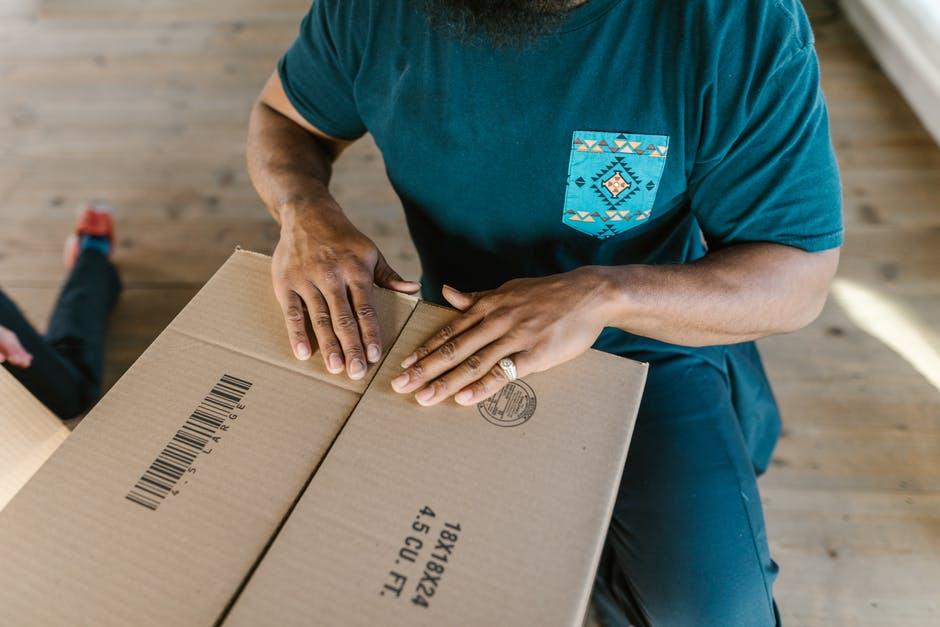Did you know that every year, 31 million Americans pull up their roots and relocate? That's 9.8 percent of Americans on the move each year.
It's little wonder that moving represents a multi-billion dollar industry. All told, it brings in an estimated $86 billion in revenue, giving it a far larger share of the market than many people realize.
When it's all said and done, the moving industry has a significant impact on the economy and a far-reaching influence over other moving-associated niches, including self-storage and auto transport.
Keep reading for fascinating and enlightening moving statistics and trends.
Moving Industry Statistics: Demographics
Studying Americans' moving habits is a fascinating way to learn more about our culture's love for new horizons. No strangers to change, the average American moves approximately 11.7 times throughout their lifetime.
Consider this in the context of the average American household's 2.3 people, and you get 15.3 million American households uprooting annually. Of this number, about three million Americans end up making an interstate more.
Who does most of the moving? When broken down by demographic, moves fall into the following categories:
- Individual or family: 44 percent
- Corporate: 38 percent
- Government: two percent
- Military: 16 percent
We can distill these stats down further, arriving at a portrait of the "average movers." They're a couple between 18 and 34 years old with one or two children.
Now as these people are moving at a fast pace you must be wondering what about their residence? Or how many of them are renters versus homeowners? So, according to findings, renters take part in most moves, even though they now move less than a generation ago.
To give you an idea, 46 percent of renters moved in 2023, as opposed to 35.2 in the late 80s. As for homeowners, 30 percent moved in 2023 as compared to 9.5 percent in the late 80s.
The above statistics show that the younger the individual or a couple is, the more likely they are to entertain a move. For instance, as we age and feel more settled, the tendency to move drops substantially.
Moving Statistics: Cost Factors
How much does the average move cost? The final number depends on many different factors, including household size, move distance, and whether you opt for a partial or full moving service.
Nevertheless, when all relocations get tallied together, we arrive at an average of $980 for an in-state move and $4,100 for a state-to-state relocation. Movers typically charge $75 per hour to facilitate these transitions.
When it comes to household size, partial moves account for 12.96 percent of all relocations. As for other household types, they fall into the following categories:
- Studio apartments: 9.37 percent
- One-bedroom homes: 28.1 percent
- Two-bedroom homes 21.16 percent
- Three-bedroom homes 20.27 percent
- Four-bedroom+ homes: 7.70 percent
Approximately 50,000 moving trucks transport household goods and other belongings between counties, states, and cross-country. What percentage of each item category do they move? Items include:
- Office and institutional supplies: one percent
- Exhibits and trade shows: six percent
- Computer and electronic office equipment (e.g., copiers, servers, fax machines, etc.): 20 percent
- Household goods: 73 percent
Although PODS and U-Haul get all of the attention, the moving industry remains heavily comprised of small businesses. Nearly 50 percent of all moving companies have fewer than five employees. As for companies with 100 or more employees? They make up 85 percent of all brand names.
Another vital component of a streamlined move is working with a car shipping company to transport your vehicles, whether it's state-to-state or coast-to-coast. Car transportation brands generate approximately $12 billion with 4,500 active companies. Here's how an excellent auto transport company can make your move a breeze.
Moving Statistics: Geography
According to data from the U.S. Census, in 2023, 18% of relocations involved crossing state borders, marking the highest percentage since the early 2000s. Likewise, the prevalence of local moves might seem lower, with only 54% of individuals who relocated in 2023 staying within the same county.
Additionally, these findings also suggest movers prefer not to venture very far. More than 40 percent remained within 50 miles of their old home, and only 24.7 percent ended up 500 miles or more away from their last location.
Moreover, for interstate moves, some destinations are witnessing noteworthy exoduses, in part due to COVID-19. (More about that in a bit.)
Which states do people most want to escape? They include:
- New Jersey
- Illinois
- New York
- California
- Michigan
- Kansas
- North Dakota
- Alaska
- West Virginia
What are the most desirable states people are moving to these days? Individuals continue to pour into the following locations:
- Texas
- Florida
- South Carolina
- North Carolina
- Tennessee
- Idaho
- Washington
- Arizona
- Colorado
- Virginia
Of the states that have witnessed the largest net gains in new residents, Texas ranks near the top, followed by Florida and South Carolina.
As for the busiest interstate move routes? They include California to Texas, New York to Florida, and California to Washington. You'll also find plenty of people making the big move from New York to California and California to Arizona.
The most adventurous movers come from the Dakotas, and they're willing to travel well over 1,000 miles for a fresh start. What about movers who stay within the shortest distance? They include people from Pennsylvania and New Hampshire who seldom surpass 50 miles.
Moving Industry Statistics: Economics
The strength of the moving industry tends to reflect that of the nation's economy. Since the end of the Great Recession, the industry has grown by approximately three percent annually. That makes for plenty of moving companies!
To be exact, there are 16,851 moving companies in operation, servicing 13,900 locations nationwide. They're directly responsible for the creation of 186,722 jobs and indirectly for 482,081 on top of that.
All told, the industry directly employs 114,240 individuals, for a total market size of $19 billion. These employees generate about $9.42 billion in tax revenues per year. What's more, the moving industry remains in lock-step with the self-storage sector, resulting in $36 billion in profits yearly.
To give you an idea of just how big the self-storage unit piece of the market is, think about this. More self-storage units exist in the United States than McDonald's and Starbucks franchise locations put together. Considering how much Americans love their Big Macs and Frappucinos, that's an impressive figure!
How do the costs associated with a move get divided? Expenses can be categorized as follows:
- Miscellaneous costs: 2.7 percent
- Packing and packaging: 7.5 percent
- Storage: 20.2 percent
- Expenses related directly to the move: 69.6 percent
Now that you have a better idea of just big the moving industry pie is, let's examine the behavioral aspects of moving industry trends.
Moving Statistics: Psychology
When it comes to the psychology of moving, we need to start with a simple question. What drives people to move?
Driving factors based on moving industry trends include:
- Desire for a better home or apartment: 17.4 percent
- Job-related reason: 10.8 percent
- To establish a new household: 12.2 percent
- Need for cheaper housing: 8.2 percent
- To shorten or improve a commute: six percent
- To own a home and stop renting: 5.9 percent
- Change in marital status: 4.8 percent
- Desire for a better neighborhood with less crime: 3.1 percent
Among those who ended up regretting a move, many of them reported that they switched to the job opportunities available.
Research has shown that people who experienced multiple moves in their adolescence are more likely to have adverse health outcomes later in life. Results also depicted that the more moves they endure, the greater their risk for psychological complications.
Furthermore, some other researchers have also discovered that those who relocate frequently tend to abandon their relationships along with their physical possessions. In other words, scientists now believe that frequent or unnecessary moves may make us view people and belongings as disposable.
Of course, it's not all negative when it comes to a change in location. People who move often have more vivid memories.
Why? Researchers theorize that life-changing transitions, such as moving, lead to a higher density of memories. Transitions cast individual events as novel, meaning they get laid more firmly in our memories because they represent unprecedented occurrences.
In a nutshell, moving may lead to fewer connections and more feelings of stress. At the same time, those who relocate often have more precise and distinct memories overall.
Moving Industry Statistics: Timing
The time of year that individuals choose to move is also a vital aspect of moving industry trends worth exploring. The percentage of households that move during the winter months sits in the single digits with six percent in November, three percent in December, and three percent in January.
When temperatures start to rise, so do the number of moves. By May, 10 percent of relocations take place. June sees 13 percent, July gets 12 percent, and August witnesses 12 percent. The single busiest day for moving in 2018 was June 1st, followed by August 1st.
How about the most popular days of the week for relocation? Friday gets 20 percent of all activity, followed by 18 percent on Saturday. Monday also performs decently at 16 percent.
Moving Industry Statistics: Preferences
Of the different ways people move, most still go the DIY route. But this approach to moving comes with plenty of stress and anxiety. When relocating feels insurmountable, and you don't have sufficient help, it exacerbates an impossible situation.
Professional movers handle approximately 650,000 relocations per year. People who tackle DIY moving without help come in at 1.35 million annually, and DIY moves without a rented moving truck sit at one million.
Researchers who deal with the psychological side of moving suggest hiring the professionals for greater peace of mind. Yes, you'll need a larger budget, but decreasing your stress levels proves well worth it.
The same goes for moving your vehicles, whether it's state-to-state or coast-to-coast. The last thing you need amid a household move is the added worry of an extended road trip. That's why the happiest household moves rely on the services of an auto transporter.
Not only can they ensure streamlined transportation, but the best ones offer tools that give you peace of mind, like the ability to track your shipment.
Moving Industry Trends
As you can see, there's a lot you can learn about relocating from the moving statistics above. That said, use these moving industry statistics to learn from the mistakes of others. For example, no matter how much money you might save in a DIY move, it's not worth the stress and worry.
So, don't hesitate when it comes to finding professional movers to work with. Also, consider engaging the services of a self-storage company to streamline your timeframe. Last but not least, find an experienced, reliable car moving company. And use our moving cost estimator to determine the cost of moving your household items.
That way, you don't have to sweat the "big stuff," like stress-inducing DIY moves and unnecessary road trips. Are you ready to find out just how affordable hiring a car moving company can be? If so, check out our no-obligation, complimentary cost calculator to get an estimate for your upcoming relocation.



